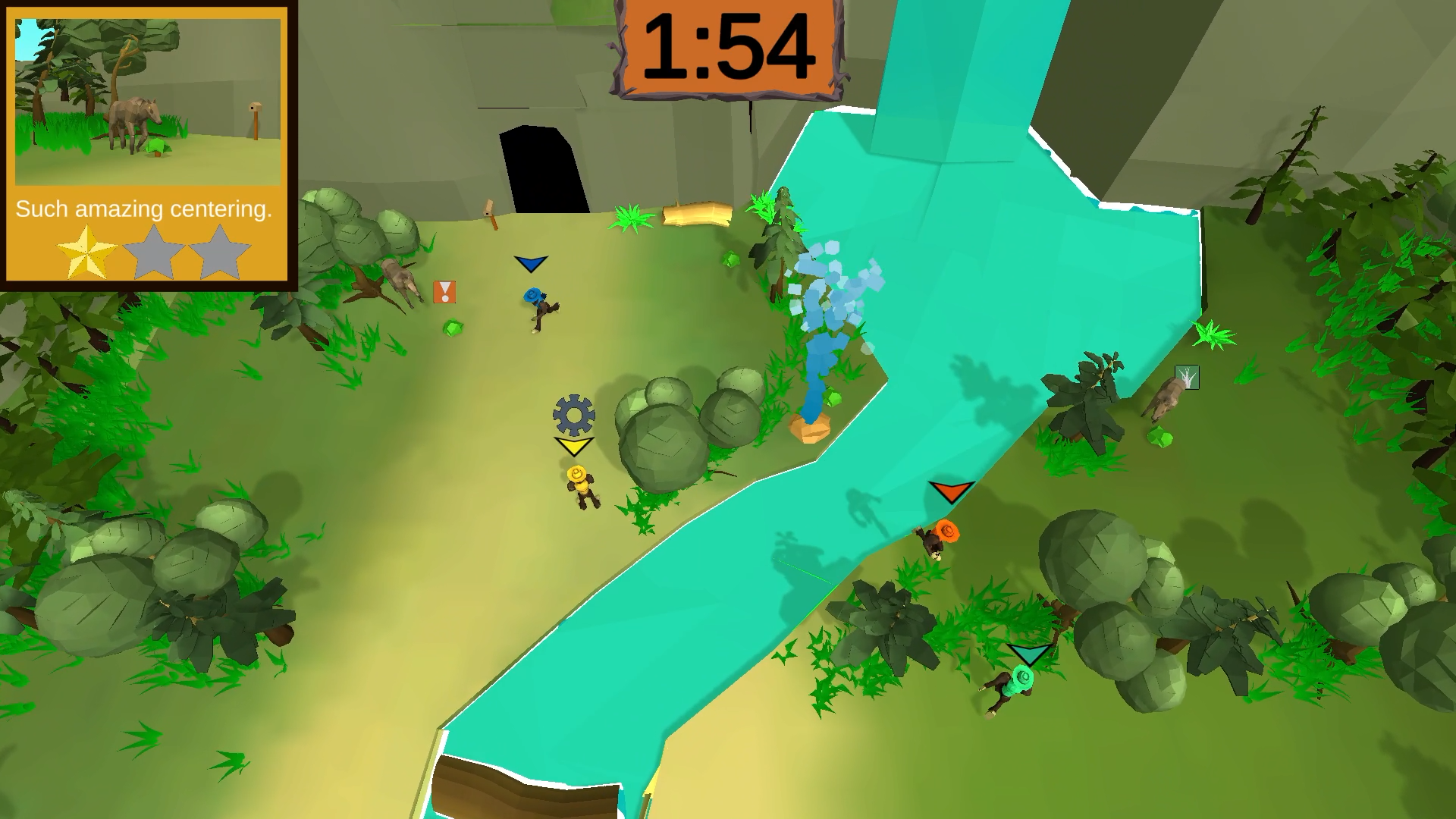
SNAPSQUATCH
SNAPSQUATCH is a local multiplayer action game where players compete to take the best wildlife photos. This was my capstone project at Michigan State University. I developed the game with the help of a multi-disciplinary group of students. We received mentorship and feedback from AAA developers at Iron Galaxy.
Team Size: 10
Platforms: PC
My Role: Technical Designer, Co-Producer
My responsibilities:
Design and document gameplay features such as player movement, scoring, and AI behavior.
Implement player movement and game input in C#.
Aid with other miscellaneous implementation tasks such as setting up sound triggers in code and player animations.
Coordinate team milestones, presentations, and deliverables along with the other co-producer.
Try it out here! It’s best with 4 players!
Iterative Design - Control Schemes & Weekly Builds
SNAPSQUATCH was my favorite project I got to be a part of at MSU because of how effective our team was at improving our designs throughout development. The way our characters respond to player input is a great example of how this helped improve the game.
We originally had conceptualized the game as a traditional arcade title. This meant we designed the control scheme under the assumption that it would use a single digital joystick input, along with some buttons - those were the available input methods on an arcade cabinet.
We decided to move away from that design because, after a lot of playtesting and feedback gathering, the game just felt more fun with a dual-stick set up on a modern console controller.
We were able to make this improvement thanks to our openness to feedback and iteration. We also had a strong rule that we would deliver a new build of the game every Monday during the project with meaningful changes that needed testing. This allowed us to experiment with three completely different styles of input and ultimately use the one that suited the game best.
I led the charge in the discussions around player input and was also responsible for coding the input system and the character controller in Snapsquatch.
Interdisciplinary Teamwork
This project was a big success in terms of cross-discipline teamwork. This was particularly true in our systems and art based around our AI wildlife.
I worked closely with one of our team’s engineers to conceptualize and document the state machine that would control the Moose character’s behavior in the game. This included many behaviors including wandering, feeding, drinking, butting horns with other Moose, and fleeing from players when startled. We stayed in close communication during the process of designing and implementing the Moose to make sure it felt good in-game, and that the design was practical to create in the time that was available to us.
I also collaborated heavily with our team’s artists, and our animator to implement the assets they created in the game. The animation was particularly important given the varied behavior of the moose, so I needed to keep our animator in the loop during the course of designing the animal.
This whole process went very well, and we were able to smoothly bring together design, engineering, art, and animation to build a fully-realized animal in the game!




